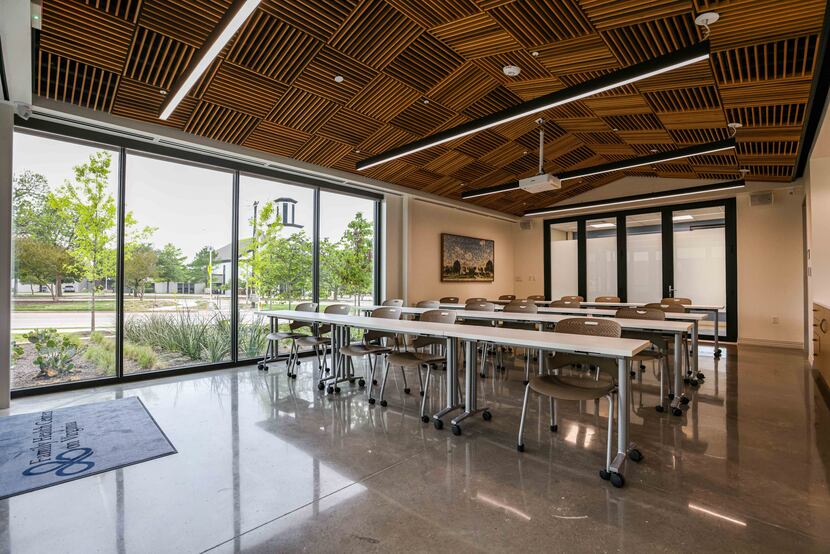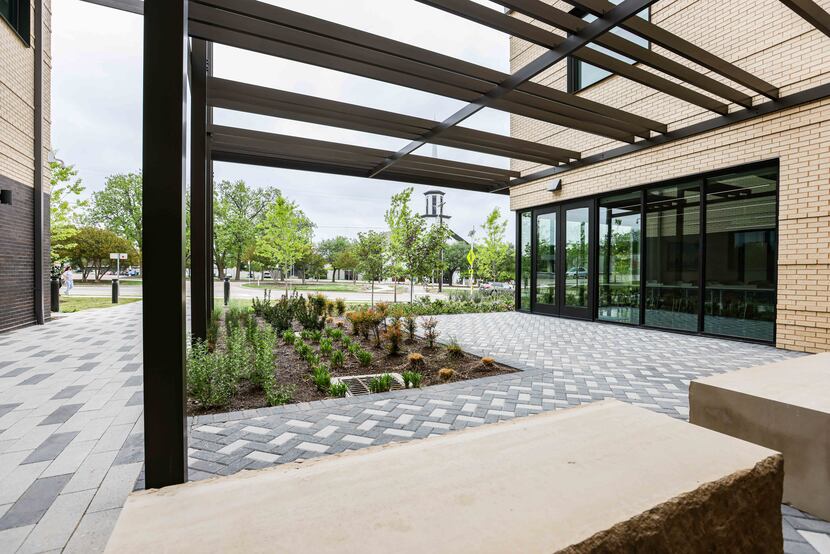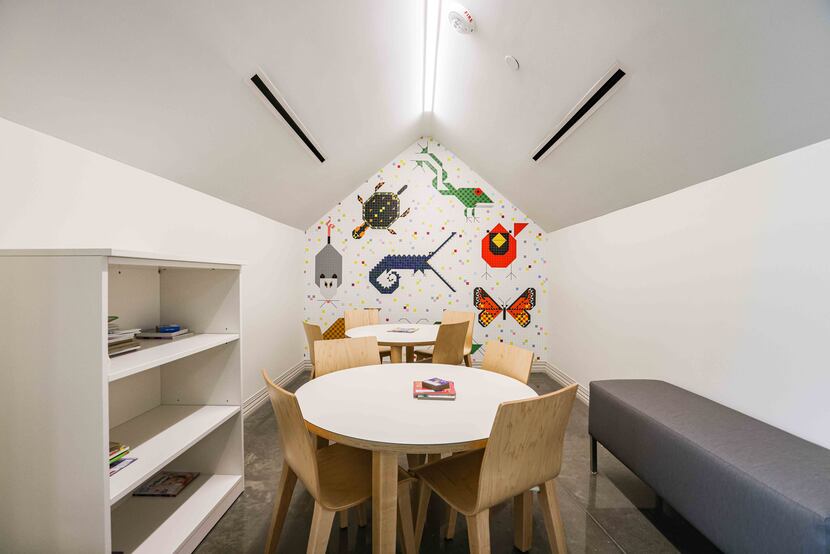If you’ve driven through the Medical District recently, you may have noticed that UT Southwestern has expanded Clements Hospital with a new wing. It is a seamless addition to the 2014 facility, such that the zig-zagging hospital now looks like an enormous W laid on its side. Like the original to which it is attached, it is a scalpel-sharp composition of concrete and glass planes designed by the Dallas office of CallisonRTKL. The new space pushes the hospital’s bed count to 750 and increases its emergency room capacity by 50 percent.
I am not here to tell you about Clements, its virtues notwithstanding. This column, instead, is about a project that would, in the unfortunate argot of our moment, “disrupt” large hospitals like Clements, and serve as an antidote to America’s institutionalized health care system.
But you might not know it from looking at it, and you’ll have to drive some 30 miles north of Clements, to McKinney, to even have the chance. There, just a few blocks off I-75 on a strip leading into the historic town center, is the Family Health Center on Virginia, a staggered jumble of gable-topped beige-brick boxes that manages to look traditional and modern, domestic and institutional at once.
This assemblage is a federally qualified health center, or FQHC, a nonprofit clinic for primary, dental and behavioral health care for the under- and uninsured.
“This space conveys a sense of dignity for those who don’t always have a choice,” says Kate Perry, who directs community health initiatives for McKinney-based Independent Bank. It was the bank’s chairman, David R. Brooks, who initiated the project in 2012, with the intention of improving health outcomes in the less-affluent, minority communities on McKinney’s east side. Thanks to in-kind contributions, the 25,000-square-foot facility, estimated to cost $10 million, was completed for roughly $6 million.
The design is by the Boston-based nonprofit architecture firm MASS Design Group, which has extensive history studying and building medical facilities, both in the United States and abroad. The firm is best known, however, for the National Memorial for Peace and Justice (colloquially, the Lynching Memorial) which opened in 2018 in Montgomery, Ala. An exhibition of the firm’s work is showing at the National Building Museum in Washington, D.C., through September 2022. (Disclosure: I contributed an essay to the firm’s 2019 monograph, Justice Is Beauty.)

In its human scale and vernacular forms and materials, the clinic is an alternative to both the cool giganticism of the contemporary hospital and the strip-mall crassness of the suburban doc-in-a-box. The architectural inspiration is the traditional Texas “dogtrot” house, in which a series of independent structures (represented here by the gabled boxes) are linked by shaded walks.
“The fundamental design agenda was really a place that’s super-approachable and de-institutionalized and feels like it’s part of the neighborhood,” says Michael Murphy, MASS Design Group’s founding principal. “It’s a community center as well as a health care center.”

Approachability begins with the literal approach, on a stretch of Virginia where commercial development gives way to residential architecture. First Baptist Church of McKinney is across the street, which turned out to be a significant advantage: The clinic was able to share an extant church parking lot in a median between the two institutions, at once reducing both the financial and environmental burdens of the project.
What parking the clinic did add was shifted to the rear, so the building could be pushed up to the street, prioritizing pedestrian access. “We wanted to resist that inclination of a car-based urban zone, and make it more of a walkable place,” Murphy says.
The entry is distinctly noninstitutional in character, set behind a trellis-covered path and adjacent to a small courtyard with native plantings. Inside, visitors are welcomed into a bright, double-height space with furnishings of blond wood.
“The main thing that we really wanted to change when you walk into this facility is the experience of waiting, so you don’t walk into a single enclosed room where you’re squished up against other people,” says David Saladik, a senior principal at MASS based in the firm’s office in Kigali, Rwanda. To that end, the waiting areas are stretched out along the length of the building in a string of home-scaled interior spaces.
The waiting areas also open up to the courtyard in front of the building, a design informed by Saladik’s experience in Africa, where patients at MASS-designed clinics wait in shaded outdoor spaces.
The arrangement is more humane, and it’s also more healthy, especially in a time of pandemic. “The most infectious place is really the waiting area, because that’s where you have undefined disease transfer that can’t be isolated,” Murphy says.

The building is essentially divided in half (in plan, it looks like an H, with the wings linked by the central spine of waiting areas), with community, educational and administrative spaces on one side, and the medical spaces on the other. The arrangement has the benefit of allowing the clinical side to be fully air-conditioned — as required by code for medical spaces — while the more public spaces are open to natural ventilation.
The clinical side is organized into four pods, two each on the first and second floors, with a total of 19 exam rooms and nine dental “operatories,” arranged in U-form around shared nurses stations. Behavioral health rooms are interspersed with the medical exam rooms, to reduce stigma and promote cross referrals. The furniture is modular for flexibility, and of the highest standard of design, provided at cost by the modern furnishings company Herman Miller.
“I like how open it is. The rooms are big. This will be a one-stop shop where patients get everything they’re looking for,” says Vanessa Garcia, a nurse enjoying a few moments in a work room adjacent to the pods.

The most pleasing room in the facility is the community room, which has broad windows that both look out to the street and open onto the planted front courtyard. Above, the gabled ceiling is a grid of warm wooden acoustic strips.
The openness of the room is both literal and metaphorical. “We want to demystify the medical practice within, at a time of deep skepticism,” Perry says.
It is a laudable goal, and one that could be expanded throughout North Texas. “If we could build five of these in each county, we’d have a distributed health care system that wouldn’t overload the centralized institutions, and would be serving the whole community more cohesively,” Saladik says.
Good ideas can come from anywhere. For better health outcomes, Texas could learn a thing or two from Rwanda.

